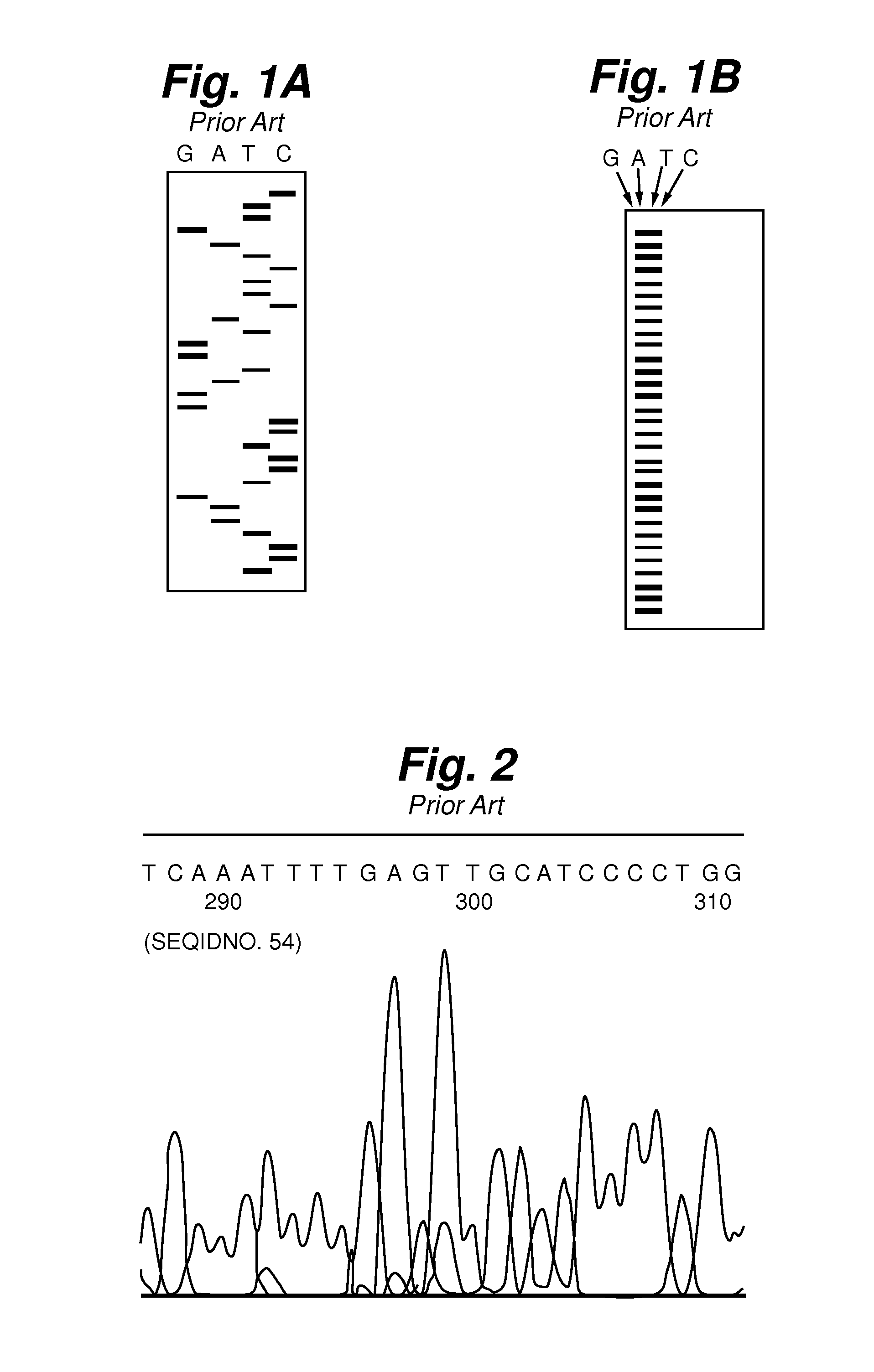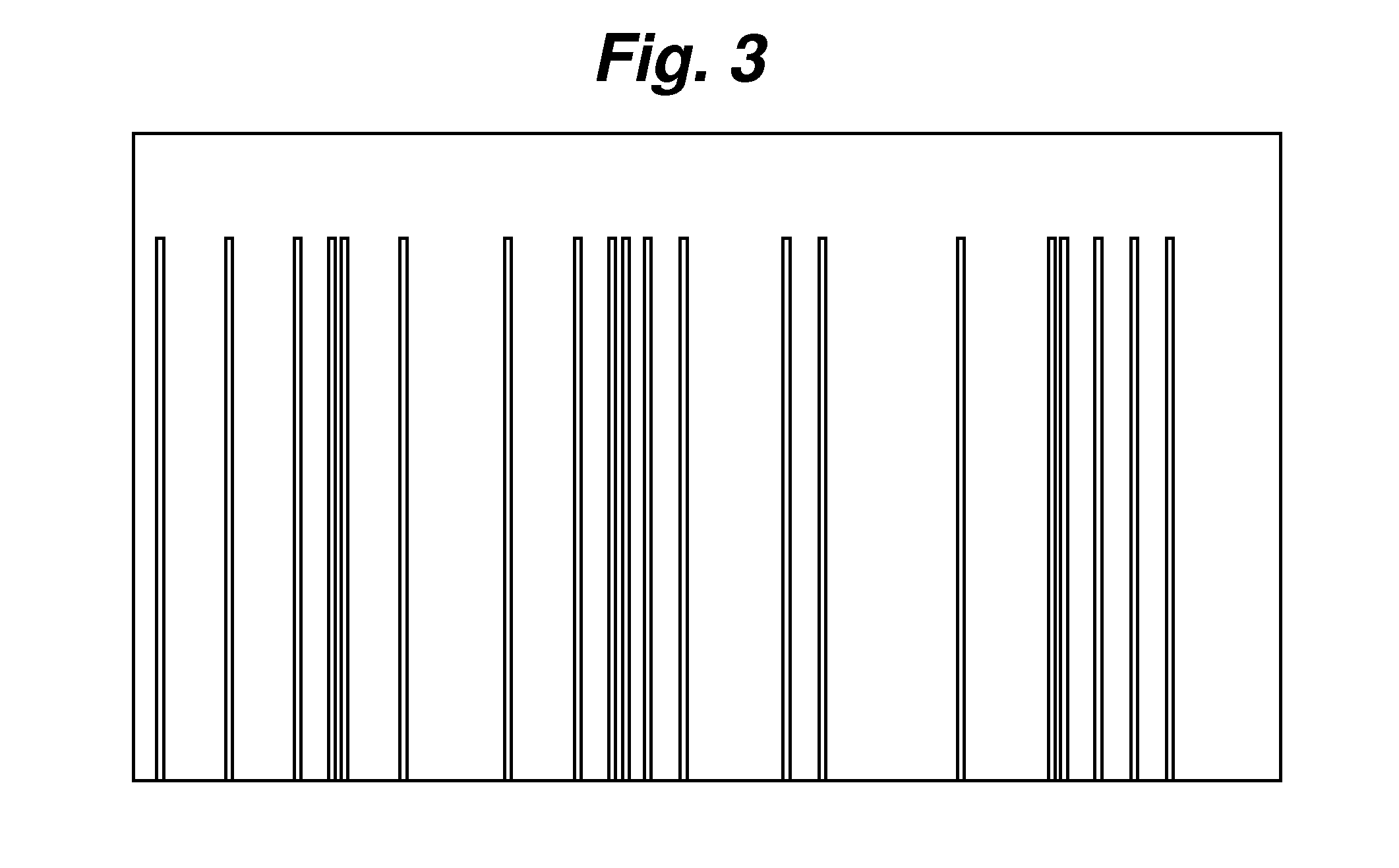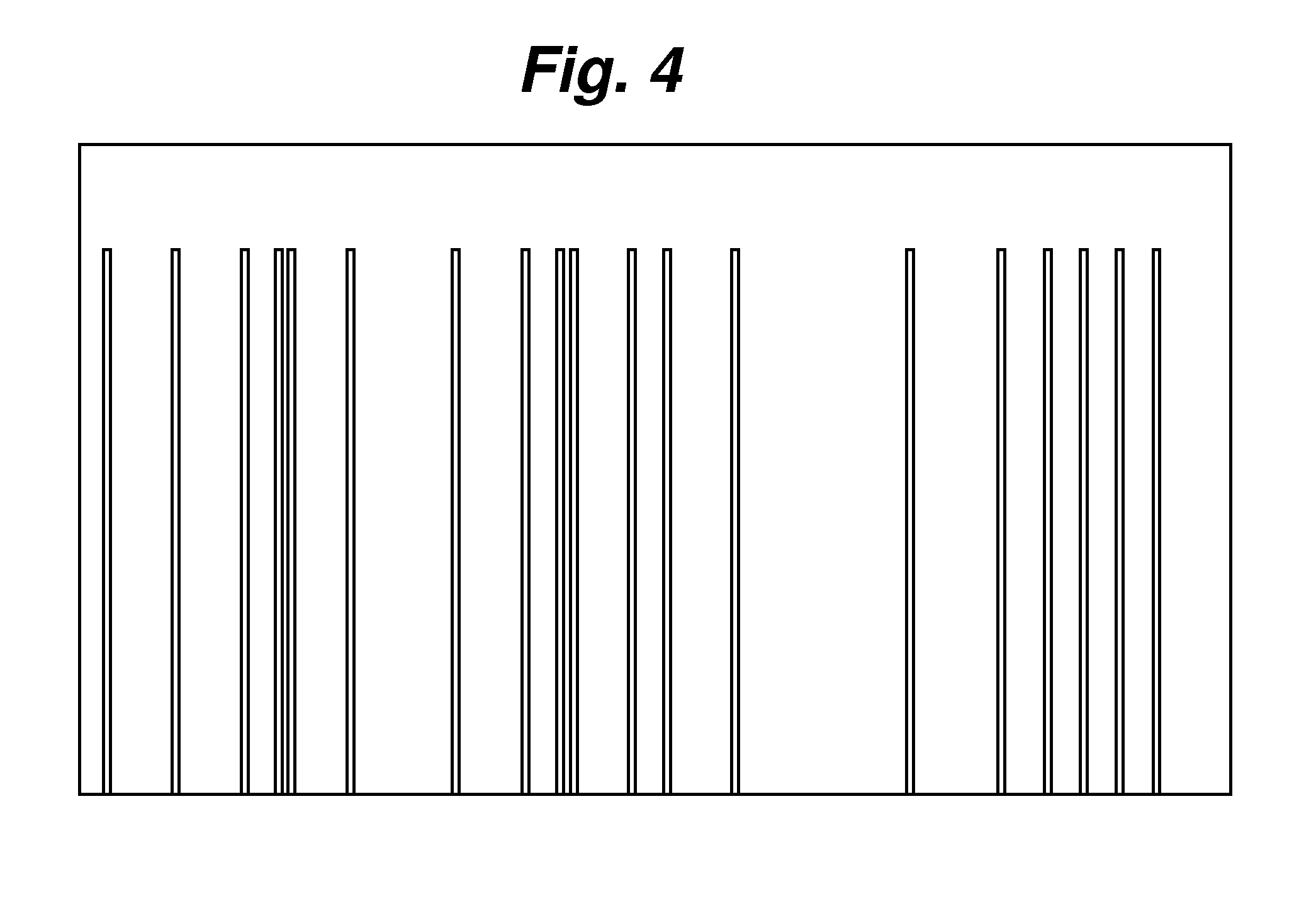System and method for nucleotide sequence profiling for sample identification
a nucleotide sequence and sample identification technology, applied in the field of sample identification by nucleotide sequence profiling, can solve the problems of insufficient discrimination, take more than 24 hours to generate enough data, and methods are not effective, and achieve the effect of efficient sample identification
- Summary
- Abstract
- Description
- Claims
- Application Information
AI Technical Summary
Benefits of technology
Problems solved by technology
Method used
Image
Examples
example 1
[0060]Generating a DNA Profile through a Chemical Cleavage Performed on One of the Four Nucleotide Positions.
[0061]DNA templates from Candida species: C. parapsilosis and C. glabrata were extracted and PCR was performed with universal primer pair U1 / U2. U1 was labeled with the fluorescent dye fluorescein. U1 is a forward primer having the following sequence: GTGAAATTGT TGAAAGGGAA. U2 is a reverse primer having the following sequence: GACTCCTTGGTCCGTGTT. When these two primers are used for PCR on these Candida species, a ˜260 base pair amplicon is created for each specie. The products from PCR were purified through spin column or ethanol precipitation before chemical cleavage. 50 μl of DNA solution was preheated to 95° C. for 3-5 minutes before adding 7.77 μl of 0.5 mM KMnO4. Then 6 μl of 1.1M pyrrolidine was added directly to the reaction mixtures and these were maintained at 90° C. for 20 minutes. After the reaction, 1 ml of butanol was added to the reaction mixtures, which were th...
example 2
[0062]Generating a DNA Profile through a Chemical Cleavage Method on Multiple Base Positions.
[0063]DNA templates from Candida species: C. parapsilosis, C. glabrata, C. albicans, and C. tropicalis were used for PCR with a universal primer as described in Example 1. The DNA were modified and digested with N-dimethylformamide and 3 mM MnCl2 at 110° C. for 30 minutes. The same method described in Example 1 for sample purification was used before sample injection and electrophoresis separation. FIG. 8 shows the electropherograms for each of the samples. For a 5′-end-labeled DNA fragment, each random degradation creates two fragments that contained the labeled dye. See Negri et al. “One-Step, One-Lane Chemical DNA Sequencing by N-Methylformamide in the Presence of Metal Ions”, BioTech., 1996, Vol. 21, pp. 910-917, the relevant contents of which are hereby incorporated by reference. Although N-dimethylformamide cuts at the 5′ and 3′ positions on the sugar base, the 5′ cleavage is less effi...
example 3
[0064]Generating a DNA profile through a Chemical Cleavage Method on Multiple base Positions.
[0065]DNA templates from Candida species: C. parapsilosis, C. glabrata, C. albicans, and C. tropicalis were used for PCR with universal primer pair ITS1 / ITS4. ITS 1 was labeled with the fluorescent dye fluorescein. ITS1 is a forward primer having the following sequence: TCCGTAGGTGAACCTGCGG. ITS4 is a reverse primer having the following sequence: GCATATCAATAAGCGGAGGA. When these two primers are used for PCR on these Candida species, a ˜580 base pair amplicon is created for each specie. After purification of the PCR product, 80% of N-methylformamide was used to cleave the DNA at 110° C. for 30 minutes. The samples were then separated with electrophoresis without further purification as in Examples 1 and 2. FIG. 9 shows the electropherograms for each of the cleavage samples. This reaction preferably cleaves DNA at the G and A positions with moderate cleavage at the C position and insignificant ...
PUM
| Property | Measurement | Unit |
|---|---|---|
| emission wavelength | aaaaa | aaaaa |
| emission wavelength | aaaaa | aaaaa |
| emission wavelength | aaaaa | aaaaa |
Abstract
Description
Claims
Application Information
 Login to View More
Login to View More - R&D
- Intellectual Property
- Life Sciences
- Materials
- Tech Scout
- Unparalleled Data Quality
- Higher Quality Content
- 60% Fewer Hallucinations
Browse by: Latest US Patents, China's latest patents, Technical Efficacy Thesaurus, Application Domain, Technology Topic, Popular Technical Reports.
© 2025 PatSnap. All rights reserved.Legal|Privacy policy|Modern Slavery Act Transparency Statement|Sitemap|About US| Contact US: help@patsnap.com



